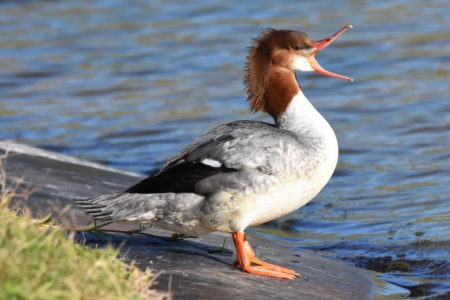
Midwinter in the Caribbean is not as chilly as it sounds – and it is a good time of year to count the region’s waterbirds, as most of them are not on the move somewhere else at this time. There is also the opportunity to do an annual health check of the wetlands that support this varied and fascinating group of birds. This year was very much a mixed picture. Reports from the islands brought some discouraging news, but also some exciting sightings.
Every year, intrepid BirdsCaribbean partners and volunteer citizen scientists put on their water boots and go out to count those birds that frequent our rivers, coastlines and wetlands. 2018 marked the 9th annual Caribbean Waterbird Census (CWC), the region-wide waterbird and wetland monitoring program. The CWC forms part of the International Waterbird Census (IWC) – the largest volunteer waterbird count in the world, organized by Wetlands International and now in its 52nd year. This year’s three-week counting period began on January 14 and ended on February 3 – including World Wetlands Day, February 2. The collected data is recorded on the newly designed eBird Caribbean online platform.
The results of the 2018 CWC have not been altogether encouraging. We might have expected this in light of the devastating hurricanes that tore through numerous islands last year, damaging fragile wetland habitats already threatened in recent years by human activities. For example, the island of St. Eustatius (Statia) reported a “very poor count,” with a small number of tropicbirds, one Osprey and one Belted Kingfisher noted. Our friends on the Turks and Caicos Islands, which were impacted by Hurricane Irma, also counted fewer shorebirds in general; numbers of Piping Plovers were notably lower than in previous years, according to a survey supported by BirdsCaribbean’s Hurricane Relief Funds.
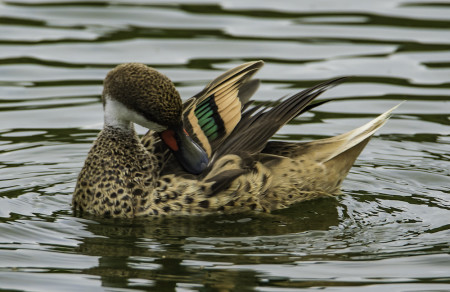
Binkie van Es is very worried about the bird populations on Sint Maarten following the devastating impacts of Hurricane Irma. In the period shortly after the storm he found lots of shorebirds all over the Island but lately they are almost completely absent. Also missing are big parts of the local population, there are only small numbers of White Cheeked Pintails (normally a few hundred), almost no Black-Necked Stilts (normally about 300), half the population of the Brown Pelican (the national bird) was lost, and only a few pairs of migratory ducks are present. He commented, “There is food and water for the birds but habitat is destroyed so no shelter. Also some of the ponds have unusually high water levels making it difficult for waders.”
Antigua’s CWC team, led by Andrea Otto and including some up-and-coming youngsters, surveyed several wetland areas. Their observations at McKinnon’s Pond were encouraging, with good numbers of Brown Pelicans, Magnificent Frigatebirds, Cattle and Snowy Egrets, and Herons (Little Blue, Great Blue, Tricolored and Green, all present). The less common Yellow-Crowned and Black-Crowned Night Herons were accompanied by a family of White-cheeked Pintail ducks. At Christian Cove, among other species, the birders reported “over 250 Black-necked Stilts entertained us with their comical gait and amusing, knobbly pink legs.” At the Bethesda and Potworks Dams, more ducks and grebes were observed in numbers, among them Blue-winged Teals, Ruddy Ducks and Pied-billed Grebes, feeding and diving alongside herons and Common Gallinules. Several Ospreys also delighted the CWC team as they fished.
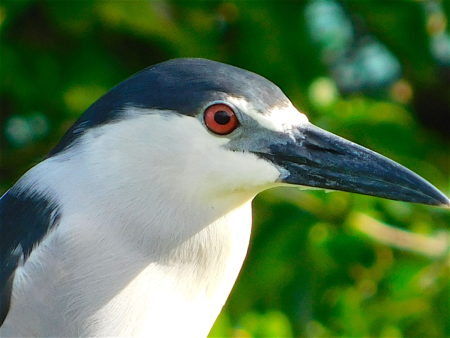
Sadly, however, the team did not see any West Indian Whistling-Ducks at all. This Caribbean endemic species, a resident on some islands and a vagrant on others, is listed as Vulnerable largely because of deterioration of habitat, predators and hunting. Antigua and Barbuda are normally a stronghold for this species so it is concerning that the duck has not been sighted in recent months. It is hoped that the 2017 hurricanes did not reduce the population of this beautiful bird any further across the region.
On Guadeloupe, the picture was not a cheerful one. In the previous two years, around 300 Semipalmated Sandpipers and Semipalmated Plovers were present on the shoreline of Anse-Bertrand. This year, a solitary Semipalmated Plover was counted. There have been fewer ducks in the past two years even before the storms, and the Guadeloupe National Park reported generally low numbers of waterbirds on Fajou Islet.
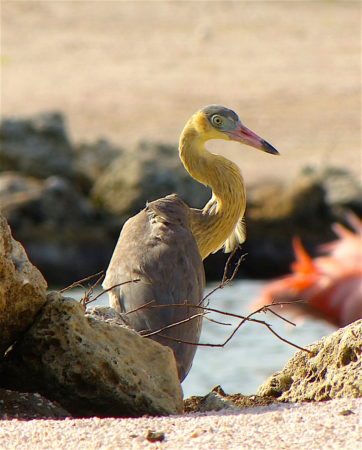
However, the picture was not all “gloom and doom.” There was no cause for disappointment in Bermuda. Unusually, three goose species were counted (Snow Goose, Brant Goose, and Canada Goose). Amongst 17 duck species, the highlights were the White-winged Scoter (only the sixth record for Bermuda), Black Scoter and Common Merganser. However, the headlines were stolen by the first ever record of a Northern Fulmar on 8th Jan and the arrival of about 1,000 Killdeer in the first week of January, as a result of Storm Grayson in the northeast US.
Spectacular sightings included the continued appearance of the rare Whistling Heron (first spotted on Curacao on December 13 2017). On January 17 at Blue Bay Curacao Golf & Beach Resort, a Willet, several Stilt Sandpipers and Short-billed Dowitchers, and 238 American Flamingos were seen at St. Michiel, a Ramsar site on February 3, displaying courtship behavior.
Participants in BirdsCaribbean’s January Bird Tour to Cuba conducted CWC counts at Las Salinas in Zapata Swamp and other wetland areas in Cuba. White Ibis, Roseate Spoonbills, White Pelicans, and numerous species of herons, egrets, seabirds, marsh birds, and shorebirds were recorded at different locations in the swamp. A special treat was a boat ride in Santo Tomas, a sawgrass marsh deep within the swamp, to find the endemic Zapata Wren and Zapata Sparrow – a few individuals of both species were seen and heard.
Several islands, including Jamaica and Bonaire, organized birdwatching trips as part of their recognition of World Wetlands Day. The Anguilla National Trust conducted its CWC activities on February 1, the day before, with a bird count at East End Pond Conservation Area and Mimi Bay Pond. At East Pond, despite a somewhat gloomy afternoon, the Anguilla team spotted a number of waterbirds, including the Great Blue Heron, Greater Yellowlegs and Black-bellied Plover.
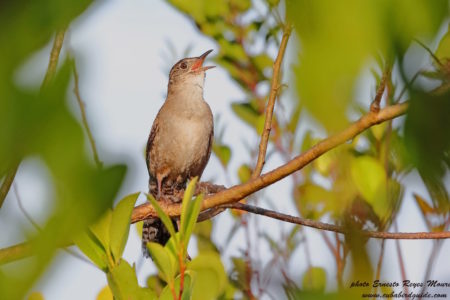
Since 2010, the CWC has provided critical insights into waterbirds’ stopover and wintering sites – large, small and sometimes unexpected – helping us to build a picture that informs conservation efforts and planning for future programs. We hope that counts later in the year and into 2019 can provide us with more fascinating discoveries that will help us to understand our changing habitats and the behavior of our endlessly intriguing waterbirds.
By Emma Lewis, Blogger, Writer, Online Activist, and member of BirdsCaribbean’s Media Working Group, based in Kingston, Jamaica. Follow Emma at Petchary’s Blog—Cries from Jamaica.
Editor’s Note: Thanks to our fantastic network of dedicated CWC participants! Your observations are adding to our knowledge of bird distribution and abundance in the Caribbean, especially important this year because of the hurricanes which impacted so many islands in the fall of 2017. Everyone, including visitors and residents, is encouraged to continue doing counts and entering your observations in eBird Caribbean. Participation is easy – learn more at this link.
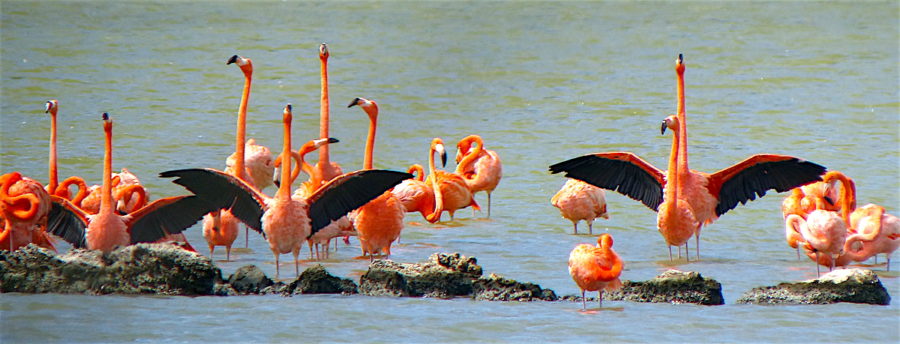

Additional photos from CWC activities are featured in the gallery below. Hover over each photo to see the caption; click on photos to see larger images and a slide show.










What a great article, thank you!